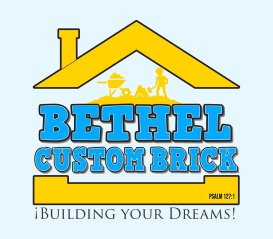A leaning chimney is a serious problem that not only affects the appearance of your home but also poses significant safety risks. Whether the lean is slight or severe, it’s essential to address the issue promptly to prevent further damage and ensure the structural integrity of your property. Understanding the common causes of leaning chimneys and the available repair options can help you take the right steps to protect your home. Illistrated below are the common causes of a leaning chimney:
1. Foundation Issues
What Happens:
A chimney relies on a stable foundation to remain upright. If the foundation shifts, cracks, or deteriorates, it can cause the chimney to lean.
Common Triggers:
• Soil erosion or compaction beneath the foundation.
• Poor drainage around the chimney base.
• Improper foundation construction during installation.
2. Settling Soil
What Happens:
Over time, the soil beneath your chimney can settle unevenly, causing the structure to tilt.
Common Triggers:
• Heavy rain or flooding washing away supporting soil.
• Expansive clay soils that shrink and swell with moisture changes.
• Improper foundation construction during installation.
3. Water Damage
What Happens:
Water infiltration weakens the mortar joints and bricks, compromising the structural integrity of the chimney. This can lead to a gradual lean over time.
Common Triggers:
• Cracked or missing chimney crowns.
• Poor flashing around the chimney base.
• Inadequate waterproofing.
4. Age and Deterioration
What Happens:
Like all structures, chimneys are subject to wear and tear. Over decades, bricks, mortar, and other components can degrade, making the chimney more vulnerable to leaning.
Common Triggers:
• Lack of routine maintenance.
• Prolonged exposure to extreme weather.
5. Improper Construction
What Happens:
A poorly constructed chimney or one built without proper reinforcements may begin to lean over time.
Common Triggers:
• Inadequate footing size or depth.
• Subpar materials or techniques used during construction.
Risks of a Leaning Chimney
A leaning chimney is more than just a cosmetic issue—it’s a structural hazard. The risks include:
- Collapse: A severely leaning chimney can collapse, causing damage to your home or posing a danger to nearby people and property.
- Structural Damage: The weight and movement of a leaning chimney can place stress on surrounding structures, such as your home’s roof or walls.
- Water Infiltration: Gaps created by the lean can allow water to seep into your home, leading to mold, rot, and further damage.
- Fire Hazards: Leaning can compromise the chimney’s flue, increasing the risk of smoke leaks or fire hazards.
Repair Options for Leaning Chimneys
1. Foundation Repair
The best repair solution for a leaning chimney depends on the severity of the lean and the underlying cause. Here are the most common repair options:
What It Involves:
Stabilizing the chimney foundation to correct or prevent further tilting. This may include underpinning the foundation or using helical piers for additional support.
Best For:
Chimneys leaning due to soil settling or foundation shifts.
Benefits:
Provides long-term stability and prevents further movement.
2. Rebuilding the Chimney
What It Involves:
Partial or full rebuilding of the chimney to restore structural integrity. Damaged bricks and mortar are replaced, and the chimney is reconstructed on a stable foundation.
Best For:
Severely leaning chimneys or those with extensive damage.
Benefits:
Ensures a safe, durable structure that matches the original design.
3. Tuckpointing and Mortar Repairs
What It Involves:
Replacing damaged or deteriorated mortar to strengthen the chimney and address minor leaning.
Best For:
Chimneys with slight leaning caused by mortar erosion.
Benefits:
Restores the appearance and stability of the chimney without requiring a full rebuild.
4. Installing Reinforcements
What It Involves:
Adding steel brackets, straps, or other reinforcements to stabilize the chimney and prevent further movement.
Best For:
Chimneys with minor to moderate leaning where foundation repair is not required.
Benefits:
Provides additional support while maintaining the existing structure.
5. Addressing Drainage Issues
What It Involves:
Improving the drainage system around the chimney to prevent water from weakening the foundation.
Best For:
Chimneys affected by poor water management or soil erosion.
Benefits:
Protects the chimney from future leaning and water damage.
Preventing Chimney Leaning
Proactive maintenance and proper construction practices can help prevent chimney leaning. Here are some tips:
- 1. Inspect Regularly: Schedule annual chimney inspections to identify early signs of leaning or structural issues.
- 2. Waterproof Your Chimney: Schedule annual chimney inspections to identify early signs of leaning or structural issues.
- 3. Maintain Proper Drainage: Ensure the ground around your chimney slopes away from the structure to prevent water pooling.
- 4. Repair Mortar Joints Promptly: Address cracks or gaps in the mortar as soon as they appear to prevent further deterioration.
- 5. Monitor the Foundation: Keep an eye on the chimney’s base for signs of settling, cracks, or erosion.
Bethel Custom Brick – Your Local Chimney Repair Experts
At Bethel Custom Brick, we specialize in diagnosing and repairing leaning chimneys to restore their safety and stability. Serving the Detroit Metro area, our team of skilled professionals provides expert foundation repairs, rebuilding, tuckpointing, and waterproofing solutions tailored to your needs. Contact us today to schedule an inspection and protect your home with reliable, high-quality chimney repair services.


